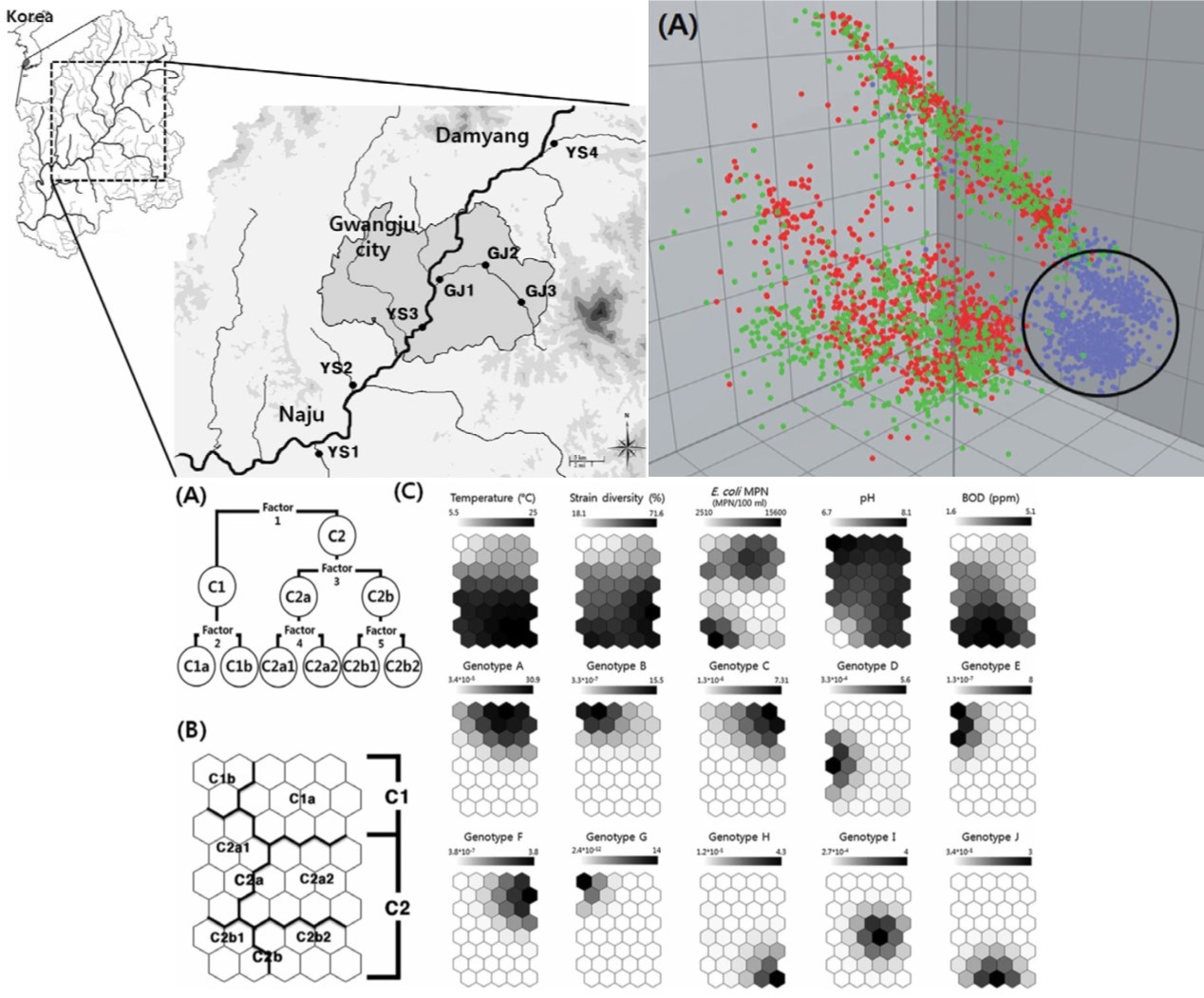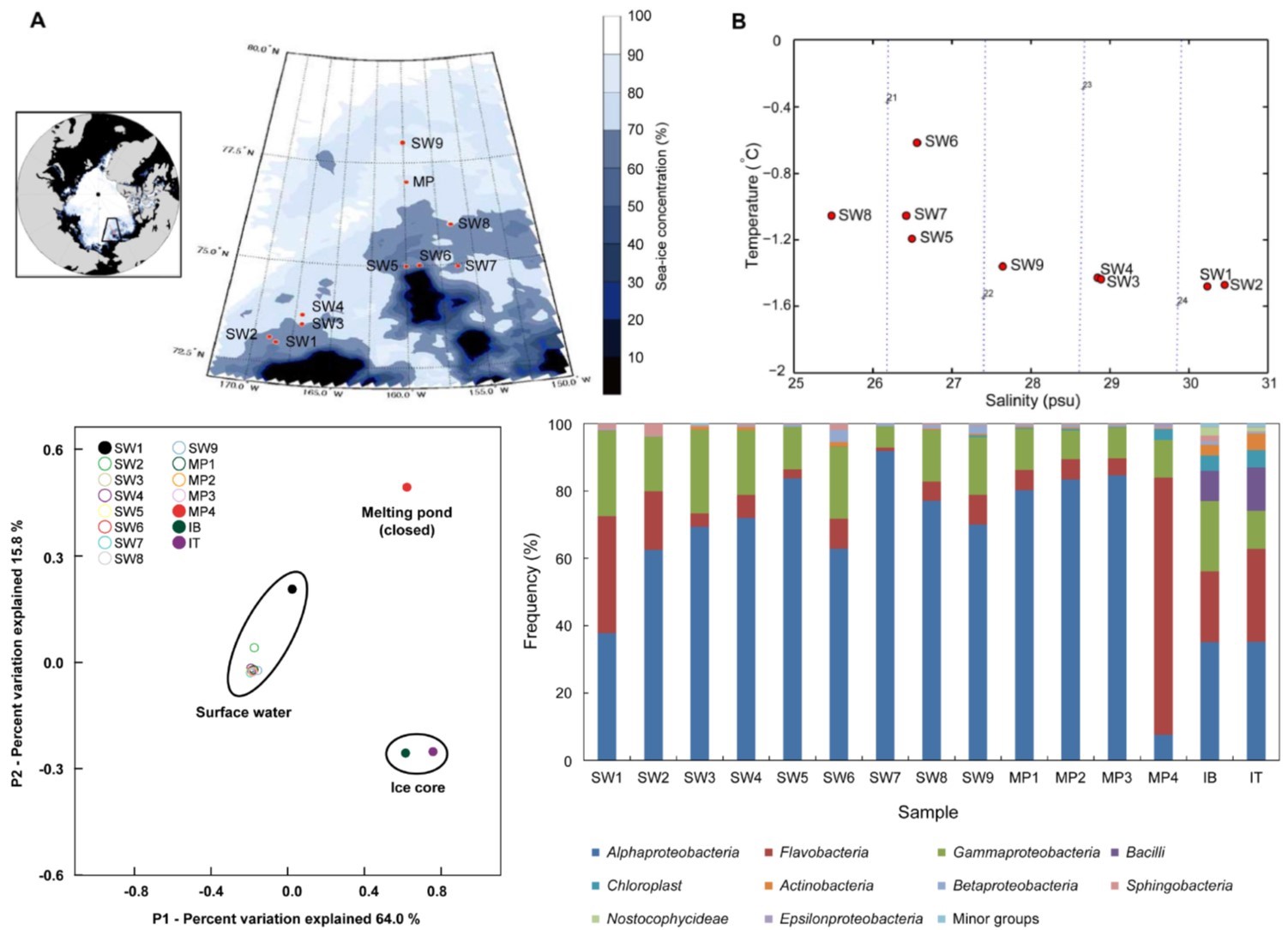Aquatic Microbiology Ecology
Aquatic microbiology encompass the studies of microorganism in freshwater and salt water ecosystem, including the bacteria diversity, pathogenicity, antibiotic-resistance, and seasonality.
Research topics are as follows:
- We have been studying on the Escherichia coli, a commensal bacterium that inhabits the intestinal tracts of warm-blooded animals, including humans. This bacterium often makes it ways into soils and water resulting in fecal contamination of the environment. The research is mainly focusing on the seasonal and spatial changes of genotypic richness and phylogenetic group changes of E. coli in the Yeongsan River basin of South Korea. Despite of that, the distribution of antibiotic-resistant and potential pathogenic E. coli in the river were observed. This could lead to the possible public health risk.
- Bacterial variation in the surface mixed layer of the Arctic Ocean during sea-ice melting season were investigated using species-sorting model. Pyrosequencing approach, physicochemical parameters, and statistical analysis were applied to understand and explain population dynamics within the seawater community. Understanding the structure of the microbial community and the interaction between coexisting populations and environmental factors may elucidate how microbial communities respond to environmental changes.
- Presence of pathogenic bacterium in the marine environment may affect the human life by direct contact and/or food consumption. Vibrio species that are capable of causing diseases like severe watery diarrhea, gastroenteritis, septicemia, and wound infections were studied and investigated for their diversity, seasonality, and pathogenicity. This study will help to increase the public awareness of the human health threatening bacteria in the marine environment.
Fig. 1. Season-specific E. coli strains isolated from the Yeongsan River basin of South Korea.
Fig. 2. Bacterial communities of surface mixed layer of the Arctic Ocean during sea-ice melting season.

